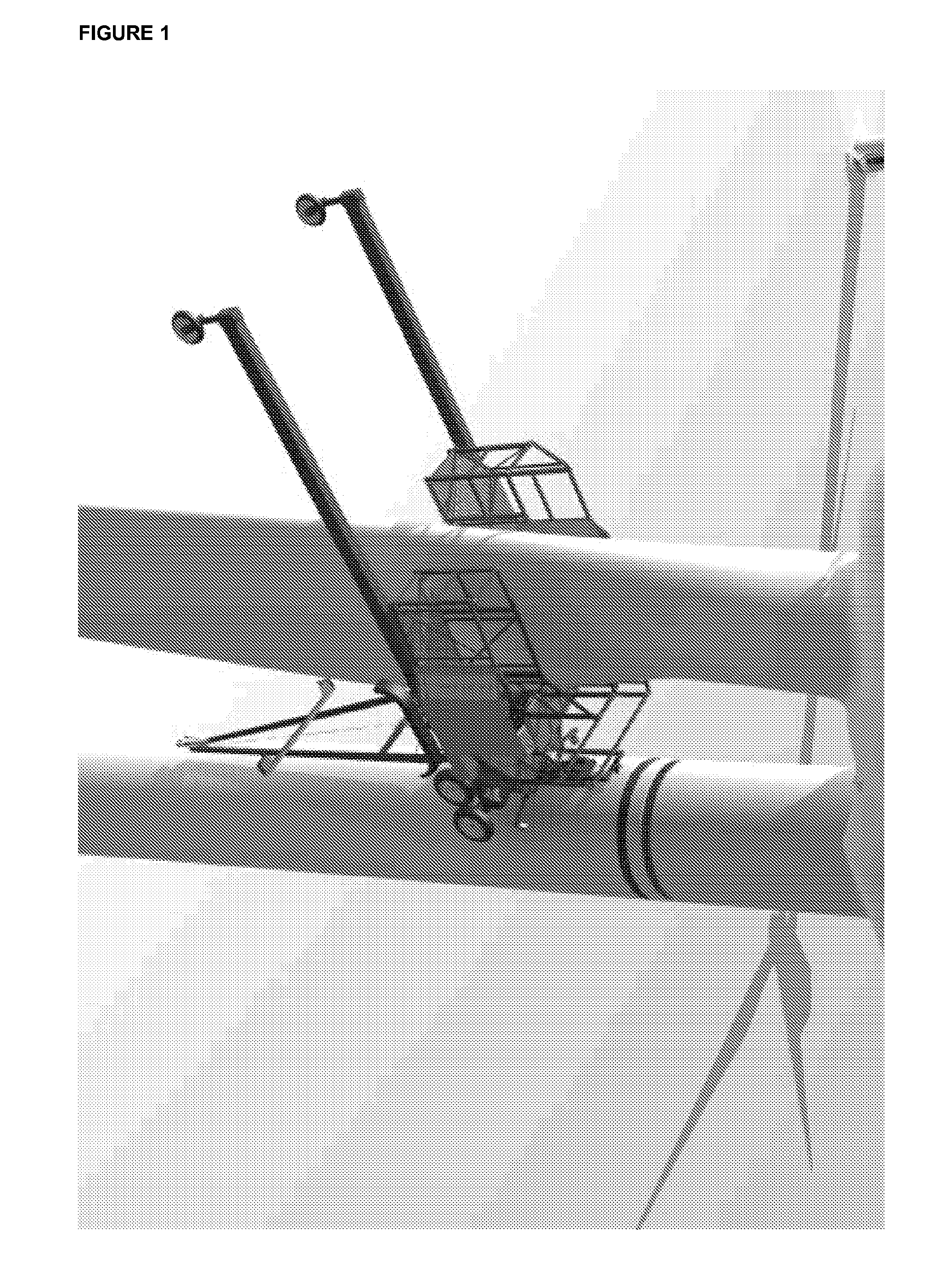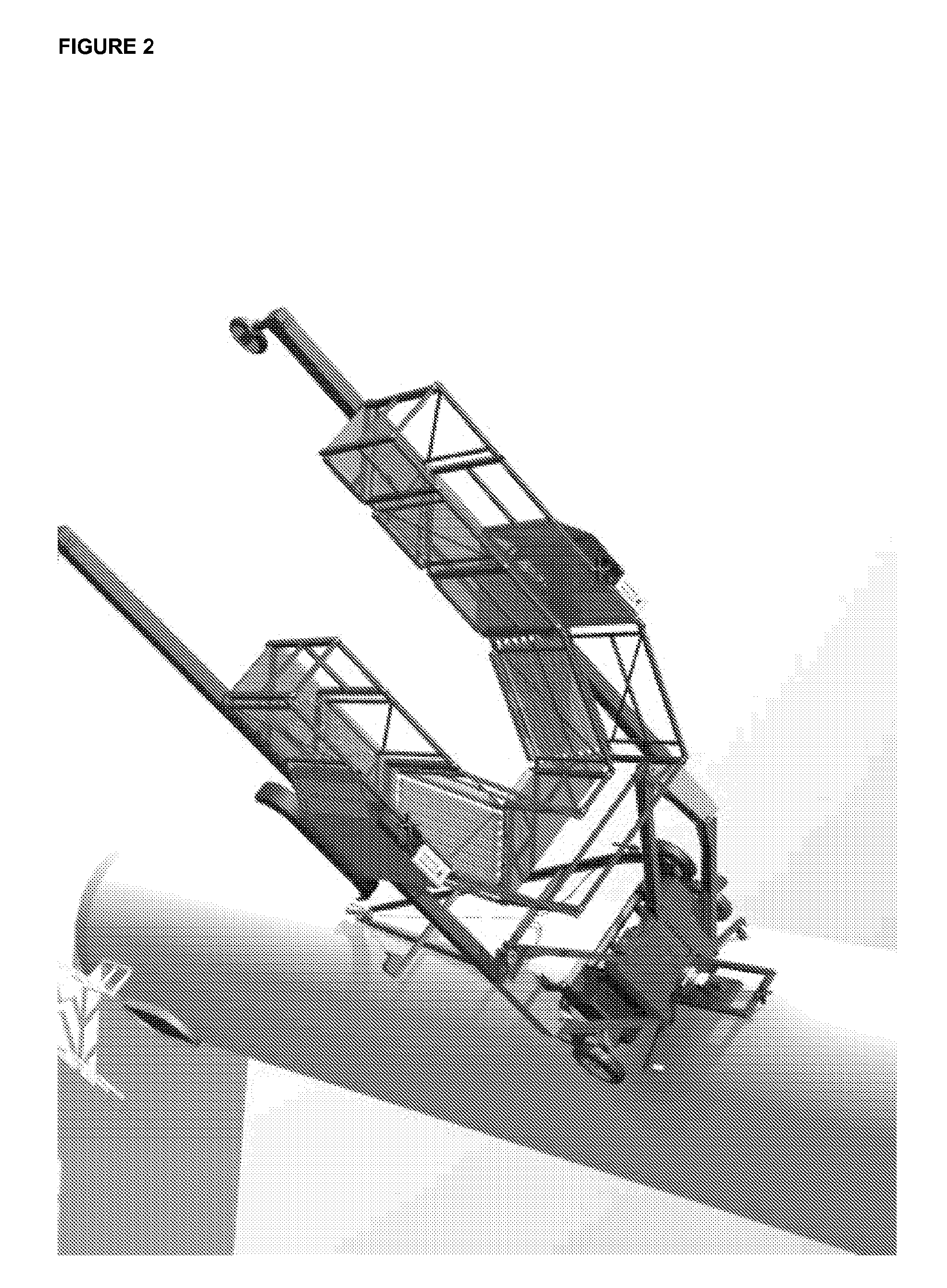Maintenance platform for wind turbines
- Summary
- Abstract
- Description
- Claims
- Application Information
AI Technical Summary
Benefits of technology
Problems solved by technology
Method used
Image
Examples
Embodiment Construction
[0049]The wind turbine shown in FIG. 1 comprises a tower, a horizontally swivelable nacelle mounted on the top end of tower and a rotor which is rotatable about a horizontal axis and mounted inside the nacelle. Rotor comprises three rotor blades attached to a common hub.
[0050]A maintenance platform of the present invention is suspended from nacelle and hub by means of support cables (not shown). One of said support cables is attached to the hub by means of a cable suspension member, while additional support cables are attached to nacelle. The maintenance platform, support cables and cable suspension member together form a maintenance system.
[0051]FIG. 2 provides a separate view of the maintenance platform. The maintenance platform is comprised of 5 sub-platforms swivably connected to each other by four joints to form a horse shoe shaped four-bar linkage.
[0052]One characteristic of the maintenance platform is that the workspace enclosed by maintenance platform can be modified by swiv...
PUM
 Login to View More
Login to View More Abstract
Description
Claims
Application Information
 Login to View More
Login to View More - R&D
- Intellectual Property
- Life Sciences
- Materials
- Tech Scout
- Unparalleled Data Quality
- Higher Quality Content
- 60% Fewer Hallucinations
Browse by: Latest US Patents, China's latest patents, Technical Efficacy Thesaurus, Application Domain, Technology Topic, Popular Technical Reports.
© 2025 PatSnap. All rights reserved.Legal|Privacy policy|Modern Slavery Act Transparency Statement|Sitemap|About US| Contact US: help@patsnap.com



